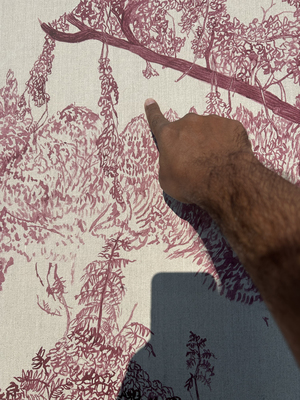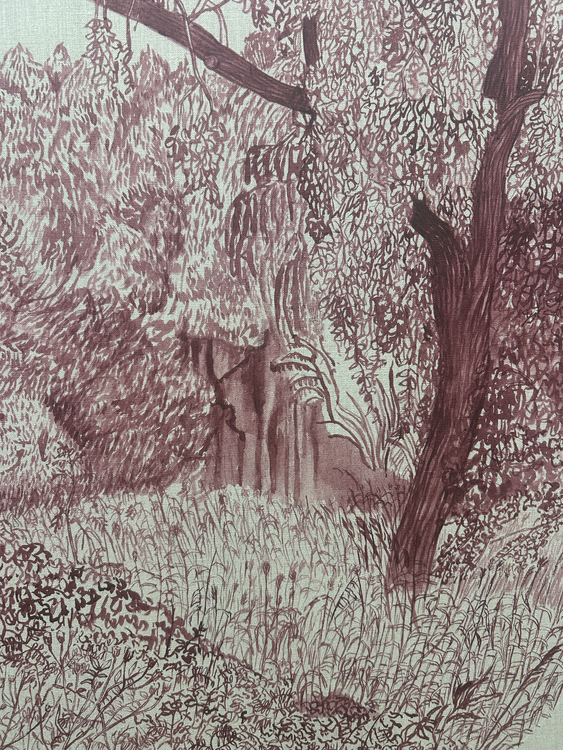I define complexity as a multiplicity of relationships.
Within my work such complexity oftentimes presents itself through juxtaposition; a stream of imagery from seemingly disparate sources joined together by the thread of personal experience. Within this new body of work made en plein-air, these relationships are fleshed out by the duration of the experience, which allows me to see things differently due to changes of light, temperature and weather. These paintings, rooted to a view, articulate a multiplicity of relationships within a single frame.

While Red landscape was conceived as a circular composition, whilst painting I realised I was addressing the square frame of the canvas and allowed this transgression to continue. This can be seen in the way the branch to the right of the canvas extends itself to the edge of the frame.
I locate these views over time - cycling past them often between home and work gradually sensitises me to their beauty. A special frame attached to my cycle allows me to load the stretched canvas and transport it to the site.
This site, along the far Weesperzijde, is located in the eastern periphery of Amsterdam and while within city limits, no trace of the city appears within the compositions although the Amstel Tower and the Rembrandt Tower, situated along the Amstel river, were visible to me while working.
This lead me to think the Impressionists, when they worked in plein-air, might have often located sylvan windows within what was probably a landscape shaped for centuries already by the hand of man and then, in the 19th century, by the beginning of industrialization.




The works are not only landscapes but also studies in monochromatic color. Working in plein air, the eye and the hand work in an inextricable and dynamic relationship that gradually makes visible details that are not initially discernible. That is to say, each pushes the other in the act of perception. This methodology has a logic of its own and each work represents a journey.
